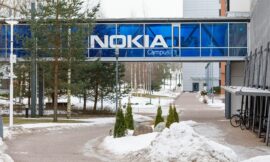Apologies if you’ve heard this story before, but one of the first projects I worked on as an analyst was a research piece focused on opportunities for the use of 28GHz spectrum in the US. Recent auctions had just taken place for what was being called Local Multipoint Distribution Service (LDMS) spectrum and people wanted to know what the market was for services in the band.
Ultimately, the use case that gained the most attention was broadband connectivity to enterprises, think fibre-like competition which would enable a new era of telco competition. And, ultimately, that use case didn’t actually propel those competitors to major success. Maybe it was because of their business cases. Maybe it was technology limitations: I recall a conversation at the time with a colleague who did not believe mmWave spectrum could be used for anything other than point-to-point connectivity.
Regardless, here we are 20-plus years later and mmWave spectrum is getting more attention than ever, and it’s worth considering why. Despite what the events of the past week suggest, it’s about more than just the:
- iPhone 12. The headline news with the new iPhone is 5G compatibility. Whether or not that is critical for would-be iPhone users, it’s particularly important for operators which want to move traffic on to their new 5G networks. And, for operators in the US which want to get users onto mmWave 5G, there is compatibility for that too. It’s not the first smartphone with mmWave 5G, but the massive demand for the iPhone ensures it will generate lots of mmWave traffic, and information.
- Spectrum assignments. The US might get most of the attention when it comes to mmWave (along with support from Apple), but it’s not alone in assigning the spectrum for 5G. Thailand, Hong Kong, Taiwan, Singapore and Finland have all assigned it. And Greece, Chile, Argentina, Brazil and Australia have awards planned. This means we will be seeing more demand for mmWave devices, more experience with how 5G works in the band and, of course, mmWave economies of scale.
- 6G. I’m sure the mere mention of the next G will cause many people to groan. Forget for a moment technology vendors and industry organisations like ATIS have begun talking-up 6G. We’ve already seen speculation on the spectrum it might operate in: sub-mmWave or Terahertz. Sure, this is approaching infrared light. More importantly, it also highlights the industry will need to figure out the economics and mechanics of mmWave 5G in the mid-term.
- Data demand. On the topic of mmWave 5G economics, it all begins with a very simple premise: increased data demand driven by myriad high-bandwidth use cases will make the use of mmWave spectrum a necessity. Sure, you could argue new spectrum is never really needed. It’s possible to simply keep shrinking cell sizes and densify networks to dizzying heights. But there is a point where siting and the associated costs become untenable.
- TCO. Data demand versus siting costs versus. infrastructure costs versus spectrum costs versus use cases all capture a dynamic which can be described in four words: Total Cost of Ownership (TCO). Where the TCO of using mmWave spectrum for 5G is greater than using other spectrum, there’s no reasonable expectation operators would put it to use. And, to be fair, evaluating this TCO has traditionally difficult given the newness of using it. But, circa 2020, we can begin to estimate mmWave 5G TCO. In fact, it’s something my team is currently engaged in. Initial results look positive: you can learn more by tuning into a presentation we’ll be giving as part of Qualcomm’s 5G Summit.
What’s not captured in the list above, though, may be the most important reason for all the attention: the fact that connecting our phones via mmWave spectrum is even possible. You don’t need to go back in time 20 years or more to find very real discussions about the viability of using high-frequency spectrum for personal communications. “It’s basic physics”, was a common refrain from many camps claiming it would never work. At best, they’d claim, the use case would be fixed, not mobile.
Put aside the potential and market momentum, the mere fact we now have mass-market phones and networks compatible with mmWave bands and networks is an impressive feat, and something worth the buzz all by itself.
– Peter Jarich – Head of GSMA Intelligence
The editorial views expressed in this article are solely those of the author and will not necessarily reflect the views of the GSMA, its Members or Associate Members.
Subscribe to our daily newsletter Back
Source of Article



